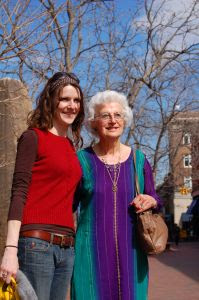
Americans in households making less than $30,000 a year spend nearly 20% of their lives in moderate to severe pain, compared with less than 8% of people in households earning above $100,000, according to a landmark study on how Americans experience in pain. The findings, published Thursday in the British journal the Lancet, also found that participants who hadn't finished high school reported feeling twice the amount of pain as college graduates. "To a significant extent, pain does separate the classes," says Princeton economist Alan Krueger, who authored the study along with Dr. Arthur Stone, a psychiatry professor at Stony Brook University.
Krueger notes that the type of pain people reported typically fell on either side of the rich-poor divide. "Those with higher incomes welcome pain almost by choice, usually through exercise," he says. "At lower incomes, pain comes as the result of work." Indeed, Krueger and Stone found that blue-collar workers felt more pain, from physical labor or repetitive motion, while on the job than off, which at least offers hope that the problem can be mitigated. This finding "emphasizes the need for pain preventing measures [in the workplace] such as better ergonomics," wrote Juha H.O. Turunen, a professor of social pharmacy at Finland's University of Kuopio, in an accompanying commentary to the report.
People with chronic pain also worked less, the new study found, costing U.S. businesses as much as $60 billion annually. These conclusions are in line with previous studies on productivity lost to common pain conditions, including a 2003 report finding that nearly 15% of the U.S. workforce's output was diminished by ailments such as headaches and arthritis. What's new in Kruger and Stone's study, however, is the level of detail with which the researchers were able to chronicle the lives of Americans in pain. With the help of the polling firm Gallup, they asked nearly 4,000 survey participants to diarize their daily activities over a 24-hour period. From these personal accounts, the researchers saw the impact pain had on people's emotional states. Though participants said interacting with a spouse or friend lowered their pain, those suffering chronic pain tended to socialize much less. They also spent a lot more time watching television�about 25% of their day compared with 16% for the average person.
Pain also appeared to be a major driver of healthcare costs. Krueger and Stone found that Americans spent about $2.6 billion in over-the-counter pain medications and another nearly $14 billion on outpatient analgesics in 2004, the most recent data available. But in these numbers, too, there may be a distinction between the haves and the have-nots. A 2005 study in Michigan showed that minorities and the poor have less access to such drugs than wealthier Americans because local pharmacies don't stock enough pain medications such as oxycodone or morphine. "Those [pharmacies] in white ZIP codes were more than 13 times more likely to have sufficient supplies," says lead researcher Dr. Carmen Green, an anesthesiology professor at the University of Michigan. "I have patients who have to drive 30 miles or more just to get their pain medications."
One characteristic that pain doesn't seem to distinguish is gender: according to Krueger and Stone's study, men and women were nearly equally likely to find themselves in pain. Another is age. People reported more aches and pains as they got older, though surprisingly that pain tended to plateau from ages 45 to 75. "Maybe people reach a point in their career where they move up the ladder into a desk job," Krueger says. "Or maybe they've just learned how to cope with the pain."






No comments:
Post a Comment